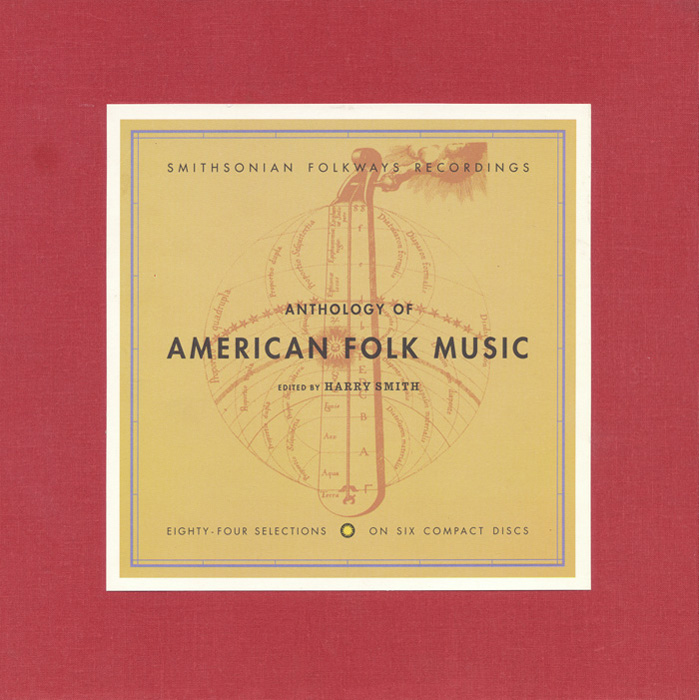You have no items in your cart.
The Anthology of American Folk Music was issued in 1952, in three 2 LP volumes. The entire anthology included 84 tracks of Appalachian folk songs, fiddle music, gospel, hillbilly, blues and Cajun tunes. The collection consisted of recordings produced between 1927 and 1932, a period that Smith perceived as the final years of distinct regional musical traditions. During the late 1920s professional musicians in rural America remained relatively insulated from the influence of the mass market and many were recorded performing vernacular music before they knew how they sounded on records. Smith edited a strange looking booklet, decorated with cut-outs from Sears Roebuck and farm catalogs, facsimiles from the 78 record covers, musical instruments from turn of the century catalogues and photographs of the performers, sheet music and collages, to accompany the release.
In his book Invisible Republic Greil Marcus described the Anthology as the story of “the old, weird America.” It was an America of many voices, voices speaking of poverty, violence, oppression and unrequited love. Smith thoughtfully divided the collection into three distinct volumes: Ballads, Social Music and Songs and deliberately arranged tracks to conjure a dialogue between performers. Subverting established ethno-musicological practice, Smith never revealed the race of the Anthology’s performers, preventing listeners from assessing the music in racial terms.
Referred to as the “founding document of the American folk revival,” and a “one-man cultural revolution,” the Anthology’s influence was tremendous, with Dave Van Ronk stating “It was the Bible for hundreds of us.” Songs continue to be performed by successive generations of singer/songwriters and remain a central component of the American vernacular songbook. The Anthology was re-released in 1997 on compact disc with expanded notes and essays and has contributed to the resurgence of the alt-country movement of artists like Wilco, Beck and Lucinda Williams.
Find out more: Smithsonian Folkways Recordings
Download the PDF or view it here:


